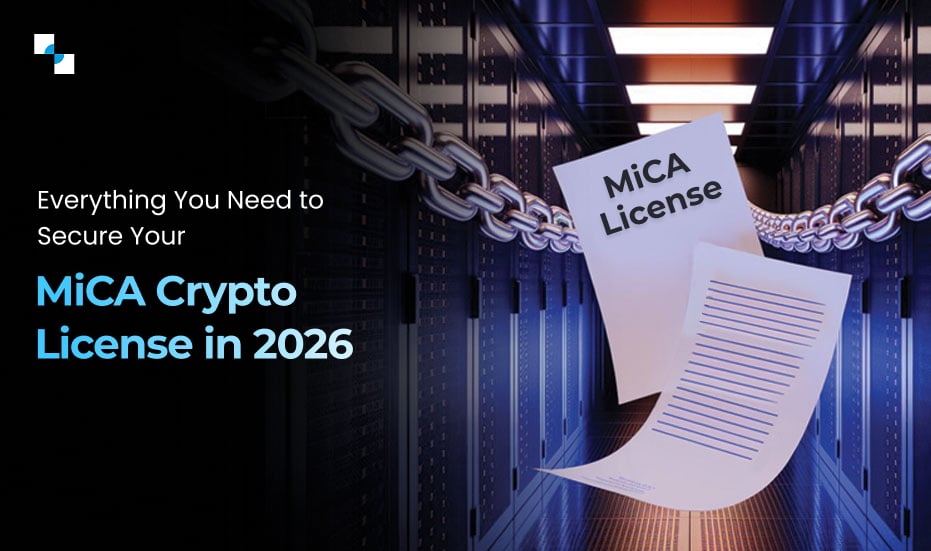The blockchain revolution has covered the entire globe and many new ventures are coming up with innovative applications and concepts. In the Post pandemic era, businesses and their customers understood how technology can make things happen and this is evident with the rise in the adoption of Blockchain technology itself.
Given below are the 5 astonishing stats, published by demandsage.com, that indicate the public interest in blockchain technology.
- As of July 2022, there are more than 83,000,000 customers of the blockchain.com wallet who utilize bitcoin.
- As of July 2022, there are around 199000 Bitcoin trades made in a given day.
- 10% of people on the planet are cryptocurrency owners.
- 16% of Americans have made virtual currency investments.
- Financial organizations can save up to $12,000,000 annually by utilizing technology.
In this blog, we will discuss how to build your own blockchain platform and our key focus will remain on Layer 1 Blockchain Solutions. This will be your go-to guide if you have decided to make your own blockchain.
We know that a blockchain is an openly available distributed network between computers. A blockchain serves as an electronic database for holding and exchanging data in an encrypted manner. The most well-known use of blockchain technology is for preserving a safe and decentralized listing of trades in cryptocurrency systems like Bitcoin. The uniqueness of a blockchain is that it boosts reliability without the need for a credible intermediary by maintaining the integrity and safety of the data.
Key characteristics of Blockchain:
- A blockchain is a particular kind of shared network of blocks. It saves data in blocks that are ultimately interconnected via cryptography.
- A new block is created as each new piece of data arrives. The data is linked with each other in chronological sequence once the block has been filled with information and is attached to the previously existing block.
- Although other types of data can be maintained on a blockchain, a transaction ledger has so far been its most popular application.
- Bitcoin was the first blockchain, and it is a decentralized network, ensuring that no one user or organization has complete power or monopoly, rather, all users collaboratively keep power.
- Since decentralized blockchains are immutable, the information stored in them cannot be changed single handily.
Let’s talk about Layer 1 Blockchain solutions.
The foundational blockchain is also known as a layer-1 blockchain. Since these are the primary networks within their ecosystem, we ascribe them as layer 1. There are off-chains as well as other layer-2 alternatives that are constructed on top of the primary chains, in contrast to layer-1 solutions.
In simple terms, whenever a protocol conducts and completes trades on its own blockchain, it is considered layer 1. Additionally, they also have a native token that they utilize to offset transaction fees.
Even without any other network, layer-1 blockchains can authenticate and complete trades. It is challenging to increase the capacity of layer-1 networks, as we have seen with Bitcoin. Programmers come up with layer-2 protocols that depend on the layer-1 network for consensus and safety as a fix. One illustration of a layer-2 protocol is the Lightning Network used by Bitcoin. Before entering their trades into the main chain, users are free to execute the trades first.
Sharding and modifying the consensus procedures are the two popular methods for putting solutions into practice in a layer 1 blockchain list. Layer 1 blockchain networks frequently used today include Ethereum, Binance Coin, Solana, Avalanche, Cardano, Polkadot, Algorand, Terra, Near, and Cosmos.
Let’s take a closer look at some of the prominent Layer 1 Blockchains.
#1. Ethereum
Ethereum is a blockchain-based decentralized global technology platform at its heart. Most people are familiar with it because of its native cryptocurrency, ether (ETH).
Anyone can use Ethereum to develop any reliable technological tools. It has a token created to compensate users for efforts made in favour of the blockchain, but if approved, users may also utilize it to pay for actual goods and services.
Expandable, customizable, safe, and decentralized are all features of Ethereum. It is the blockchain of choice for programmers and businesses building technology atop it to transform numerous sectors. It commands the biggest user base in the blockchain space.
#2. Binance Coin
The coin known as Binance Coin, which trades under the sign BNB, was created by the Binance exchange.
Although BNB is currently the native currency of Binance’s own blockchain, the Binance smart chain, it was originally built on the Ethereum network.
In 2017, Binance was developed as a utility token for reduced trading fees, but since then, its usage has grown to include payments (on the Binance Chain), scheduling trips, enjoying leisure, using internet services, and accessing decentralized financial services.
#3. Solana
Solana is free for all initiative that creates a unique and super-fast, layer-1 blockchain. A revolutionary proof-of-history (PoH) strategy and a rapid-fast synchronizing engine, are blended in Solana’s consensus model (PoS). The Solana can potentially manage more than 710,000 trades per second (TPS) which is not dependent on any scalability alternatives.
The next-gen blockchain framework utilized by Solana is designed to make it simpler to develop smart contracts and decentralized applications (DApps). The initiative assists a wide array of non-fungible token trading platforms as well as decentralized finance (DeFi) systems.
#4. Algorand
A decentralized network Algorand was created to address the Blockchain Conundrum of concurrently obtaining quickness, safety, and decentralization. Algorand is a trustless, open-source blockchain network that anybody can develop. Algorand is intended to be a money transfer payment network with quick trades and a heavy focus on attaining near-instant closure, which entails handling over 1,000 trades per second (TPS) and reaching trade conclusions in under five seconds.
#5. Cardano
Cardano is a blockchain platform with a great focus to improve lives for all and decentralize power. Its own coin, called ADA tokens, is used to cover trading costs on Cardano. Additionally, they can be committed to gaining incentives.
Cardano supports smart contracts, just like its competitor Ethereum. It can be used by programmers to create massive decentralized finance (DeFi) systems and decentralized apps (dApps).
Cardano describes itself as a network for entrepreneurs, inventors, and disruptors.
How Layer-1 Blockchain Solutions function
The project development team generally introduces Layer-1 networks. The network will often need either a network hard fork or a soft fork, based on the scalability strategy, accompanied by some modest, complementary adjustments.
A hard fork is necessary for the more significant adjustments, such as raising the block size of Bitcoin to 8MB. A blockchain with revisions and one without was produced by the hard fork itself. Sharding is another method for extending a network’s size. This is accomplished by segmenting the blockchain’s functionality into separate components that can handle data processing concurrently.
Build Your own Blockchian Platform with Us
Schedule Free DemoSteps to create your own Blockchain
Given below are the steps you must follow while creating your own Blockchain:
Step 1. Determine a Suitable Use-case
Future developers must possess the knowledge and skills necessary to comprehend blockchain technology, which will transform how transactions are conducted over the course of the next ten years. Therefore, you must identify a use case that makes business sense before you get involved in the blockchain.
Blockchains can perform three tasks very well:
- Information Validation & Identity verification
- Intelligent Asset Management
- Insightful Contracts
Hence, define your product/business goals around these capabilities of cryptography to start with during this stage.Step 2: Examine the Best Consensus Mechanisms & Algorithms
Proof of work served as the consensus mechanism for the initial blockchain, which underpins bitcoin. Today, however, several blockchain platforms are available that provide a selection of consensus algorithms and methods, including Proof of Work (PoW), Proof of Stake (PoS), and others. Select the best one which suits your business and use case.
Step 3 Finding the Best Platform
There are numerous distributed ledger technologies available today, and the majority of them are freely available. Selecting the best blockchain platform depends on the consensus algorithms and mechanism you decided on in step 2.
Step 4. Building the Nodes
Additionally, you should choose between building your blockchain application or network in a permissioned network or a permissionless network.
Permissionless Networks: anyone to enter and commence validating. The most popular examples are the Ethereum and Bitcoin networks.
Permissioned network: In this scenario, only a select group of participants are permitted to validate the blocks, and the network administrator controls who can access the network. The consensus methods can be fully original built or they can be the same as in a permissionless network.
Step 5. Create the elements of the blockchain
The following components of the majority of blockchain networks require very well-designed configurations:
- Permissions
- Issue of assets
- Asset re-issuance
- Atomic exchanges
- key governance
- numerous signatures
- Parameters
- native resources
- Address types
- key formats
Step 6. Building the APIs
Certain immutable blockchain technologies lack pre-made APIs, however, the majority do. The majority of APIs you’d need for your proposed development is:
- Establishing Addresses And Key Pairs
- Acting In Audit-Related Roles
- Utilizing Hashes And Digital Signatures To Verify Data
- Keeping And Retrieving Data
- Lifecycle Management Of Smart Assets, Including Issuance, Payment, Exchange, Escrow, And Retirement
- Smart Contracts
Step 7: Administrative and User Interface Design
You would need to select the front-end and coding languages at this stage. Along with servers, you would also be required to select external databases.
Step 8: Adding Web.2.0 & Web 3.0 elements
By using innovative solutions coming from newer technological advancements, you can greatly enhance the capabilities of your Blockchain solution.
Without a question, when implemented intelligently, blockchain technology may aid society in resolving several urgent concerns. When blockchain technology first emerged, many overly business-minded people hailed it as a panacea. However, blockchain technology may help in most areas.
Conclusion
While there are many advantages, building your own blockchain involves a lot of work and a variety of skills and resources to complete all parts of the process in the fastest and most affordable manner possible.
Employing the assistance of professional developers will enable you to future-proof your solutions by working with professionals who stay up to date on all the latest market developments and innovations, reduce the potential for errors and, consequently, the time and cost of rework and updates, and free up your time to expand your business.
Discover the advantages of having your coin and blockchain for your business. Hiring the best Blockchain development service is the best bet and Antier should be your preferred development partner who has delivered several projects. Connect with our teams today.







